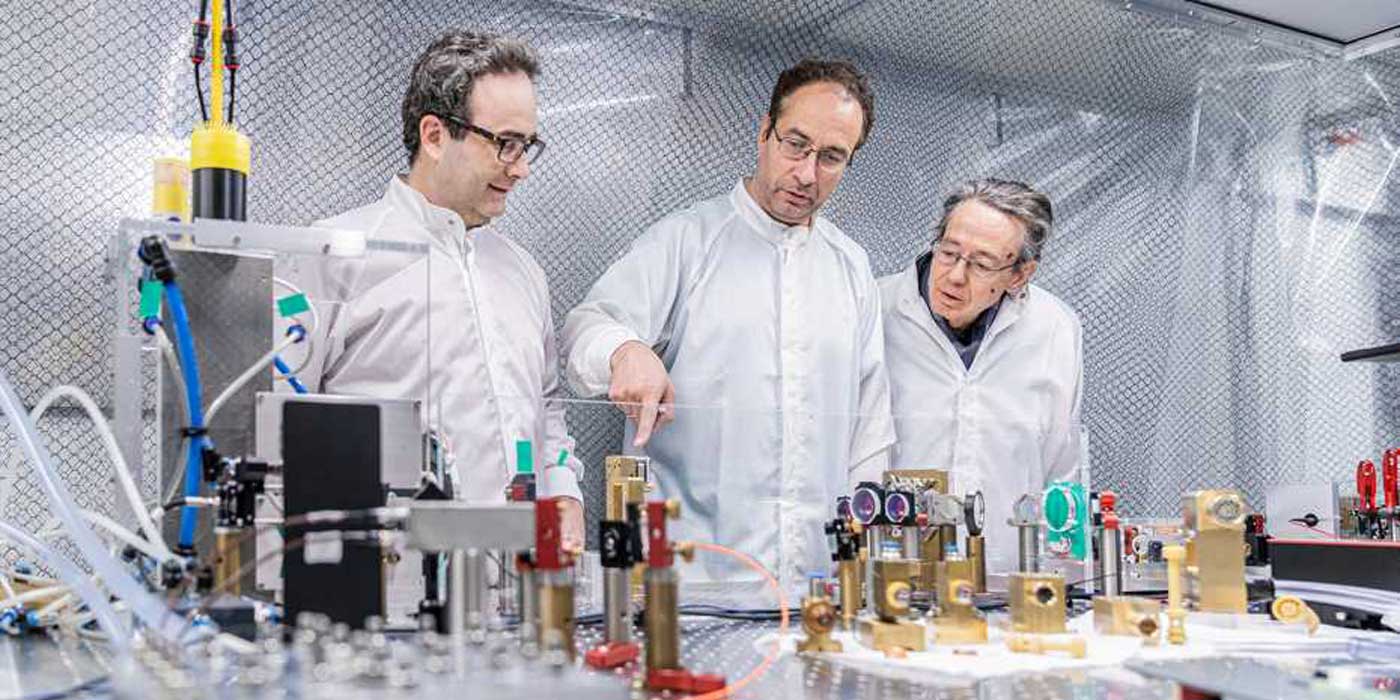
Helium is the second-most abundant element in the universe, after hydrogen, and accounts for about 25 percent of the universe’s atoms. It is usually in the form of a gas that consists of a nucleus of two protons and two neutrons surrounded by two electrons.
For fundamental physics, it is crucial to know the helium nucleus’ properties, as it is a very fundamental nucleus.
In a new study, international research collaboration has successfully determined the helium nucleus’ size more precisely than ever before. In experiments at the Paul Scherrer Institute PSI, a global research collaboration with ETH Zurich involvement has measured the radius of the atomic nucleus of helium five times more precisely than ever before.
Their study reveals that the helium nucleus’ mean-charge radius is 1.67824 femtometers (there are one quadrillion femtometers in 1 meter).
Aldo Antognini, a physicist at PSI and ETH Zurich, said, “The idea behind our experiments is simple. Normally, two negatively charged electrons orbit the positively charged helium nucleus. In our experiments, we didn’t work with normal atoms, but with exotic atoms in which a single muon has replaced both electrons.”
“The moon is considered to be the electron’s heavier brother; it resembles it, but it’s around 200 times heavier. A muon is much more strongly bound to the atomic nucleus than an electron and encircles it in much narrower orbits. Compared to electrons, a muon is much more likely to stay in the nucleus itself. So with muonic helium, we can conclude the structure of the atomic nucleus and measure its properties.”
Muan particles can be generated using a particle accelerator. The particles with low energy are slow and can be stopped in the apparatus for experiments.
Using this way, scientists can create exotic atoms in which a muon throws an electron out of its orbit and replaces it. On the other hand, fast muons fly right through the apparatus. The PSI system delivers more low-energy muons than all other comparable systems worldwide.
Franz Kottmann, who for 40 years has been pressing ahead with the necessary preliminary studies and technical developments for this experiment, said, “That is why the experiment with muonic helium can only be carried out here.”
In right conditions, muonic helium is created, where the moon is in an energy state in which it often stays in the atomic nucleus.
Randolf Pohl said, “Now the second important component for the experiment comes into play: the laser system. The complicated system shoots a laser pulse at the helium gas. If the laser light has the right frequency, it excites the muon and advances it to a higher energy state, in which its path is practically always outside the nucleus. When it falls from this to the ground state, it emits X-rays. Detectors register these X-ray signals.”
During the experiment, the laser frequency is changed until a large number of X-ray signals arrive. Physicists at that point talk about the so-called resonance frequency. With its assistance, at that point, the contrast between the two energetic conditions of the muon in the atom can be determined.
As per the hypothesis, the measured energy contrast relies upon how large the atomic nucleus is. Thus, utilizing the theoretical equation, the radius can be resolved from the measured resonance. Randolf Pohl’s group did the fundamental information examination at the Johannes Gutenberg University in Mainz.
Julian Krauth, first author of the study, said, “Our measurement can be used in different ways. The radius of the helium nucleus is an important touchstone for nuclear physics.”
Journal Reference:
- Krauth JJ et al.: Measuring the α-particle charge radius with muonic helium-4 ions. Nature. January 27, 2021. DOI: 10.1038/s41586-021-03183-1
Continue reading Physicists precisely measured the radius of the atomic nucleus of helium on Tech Explorist.
0 comments:
Post a Comment